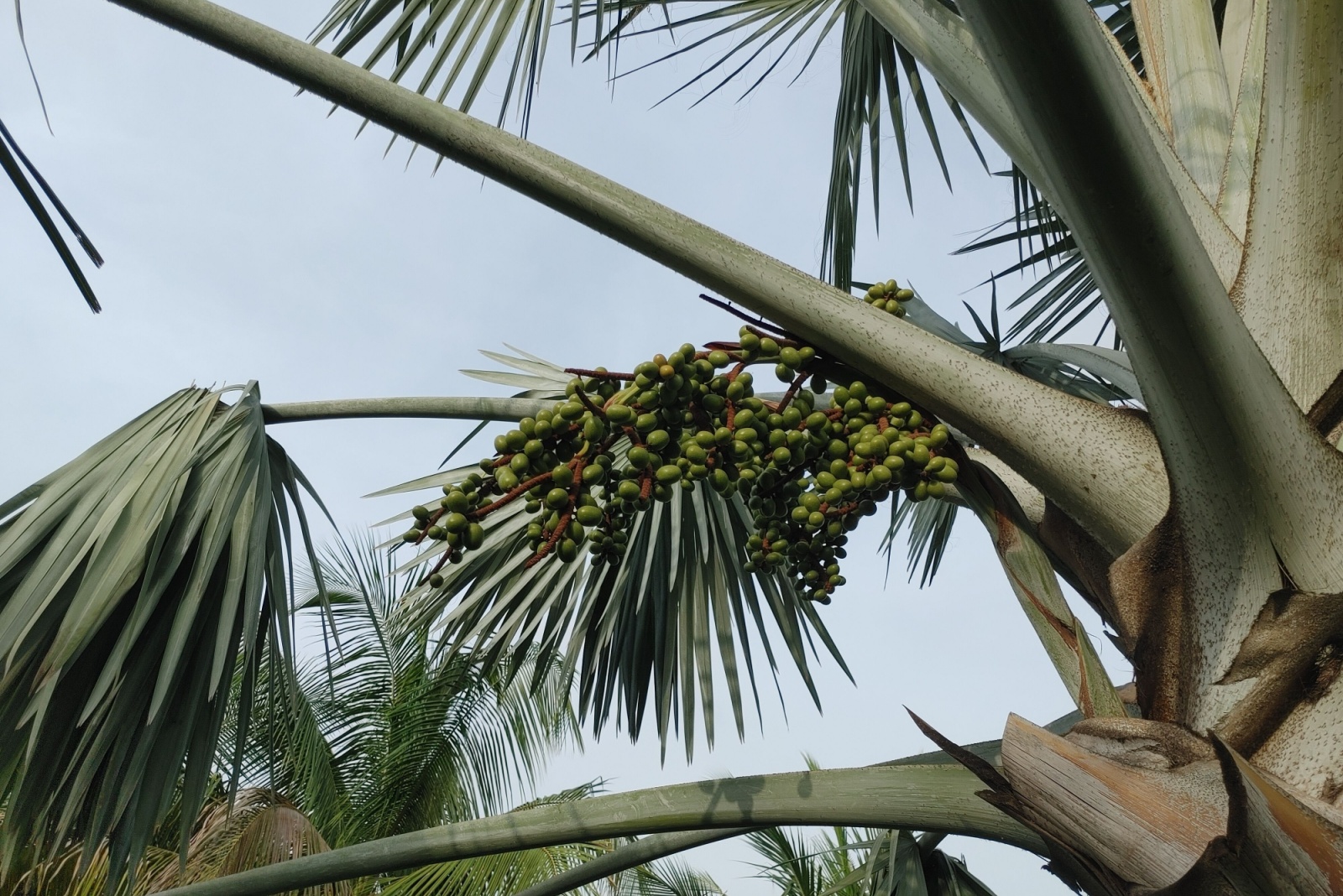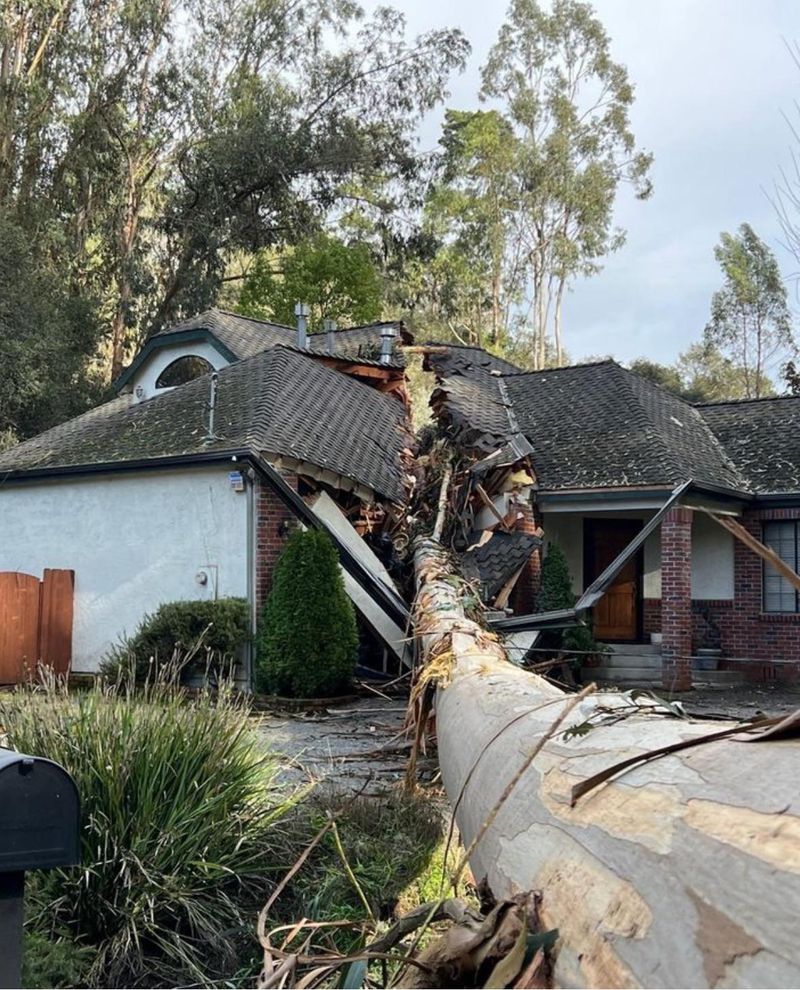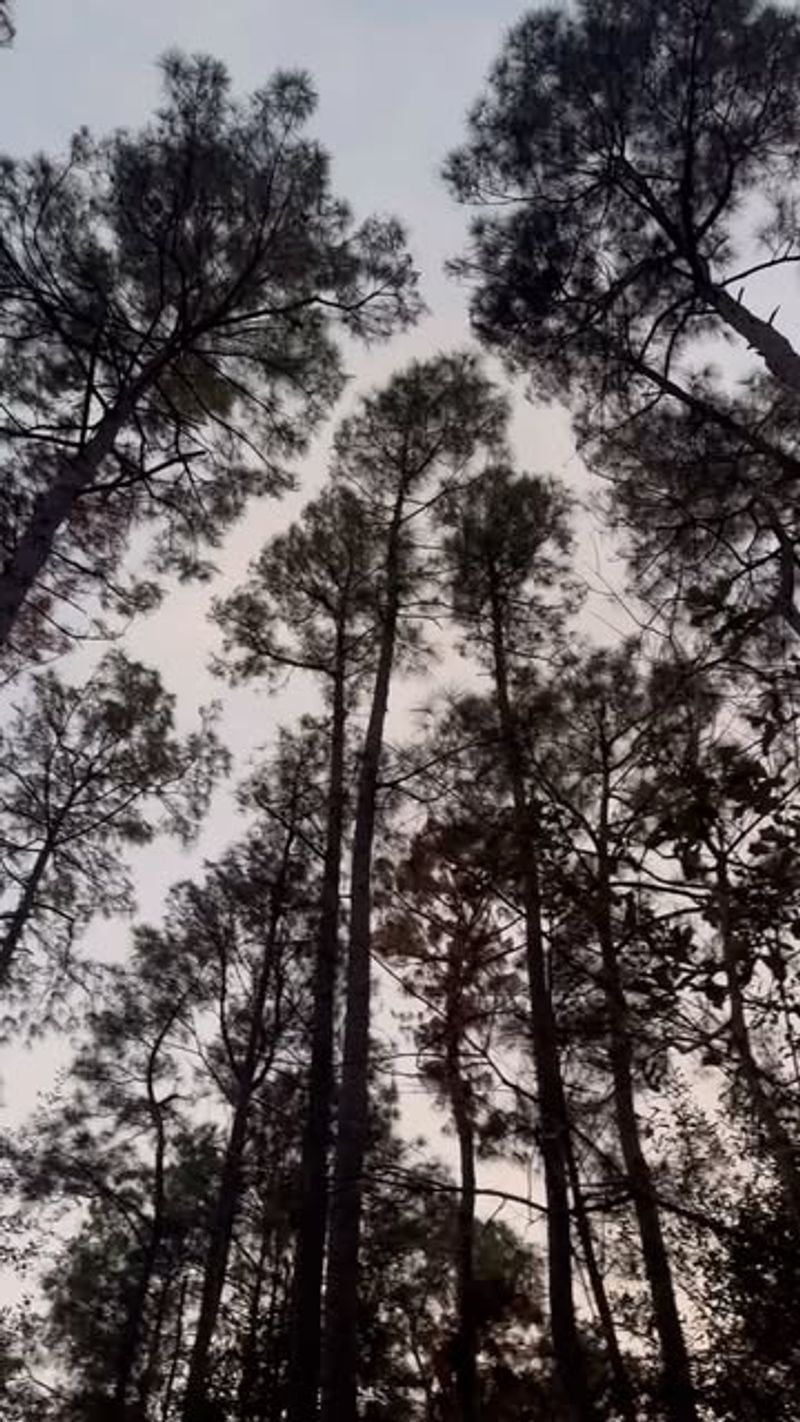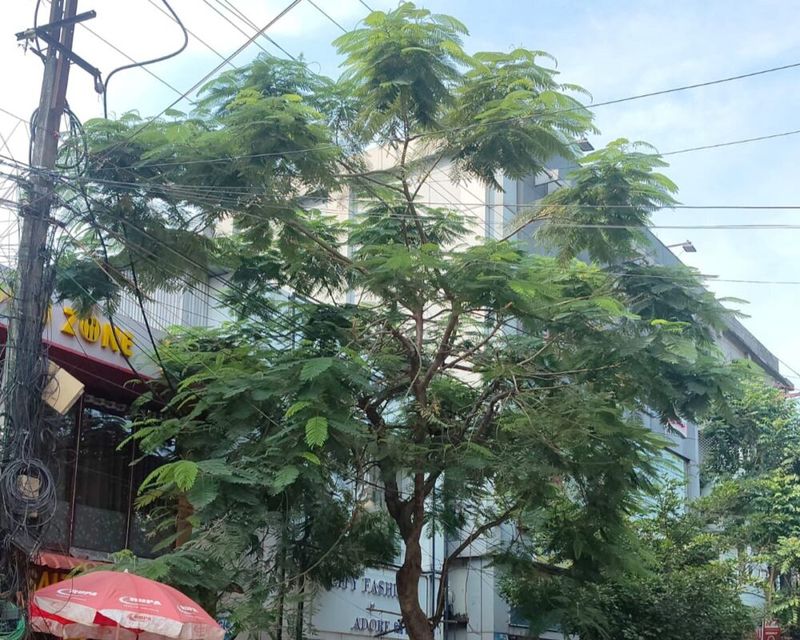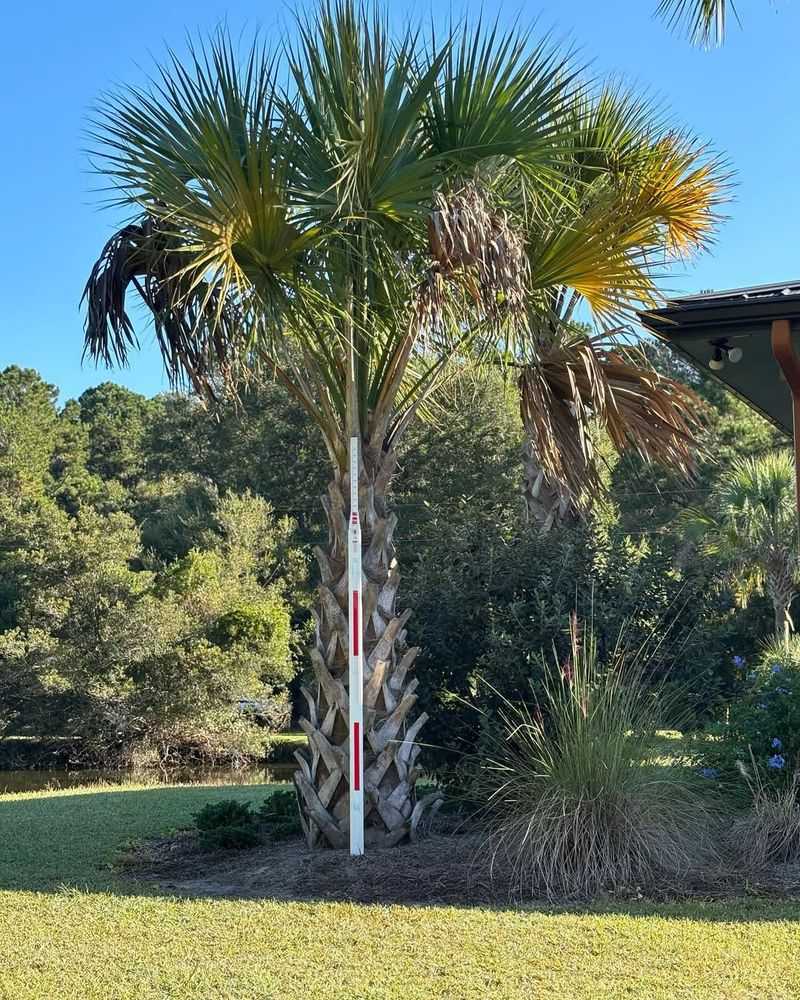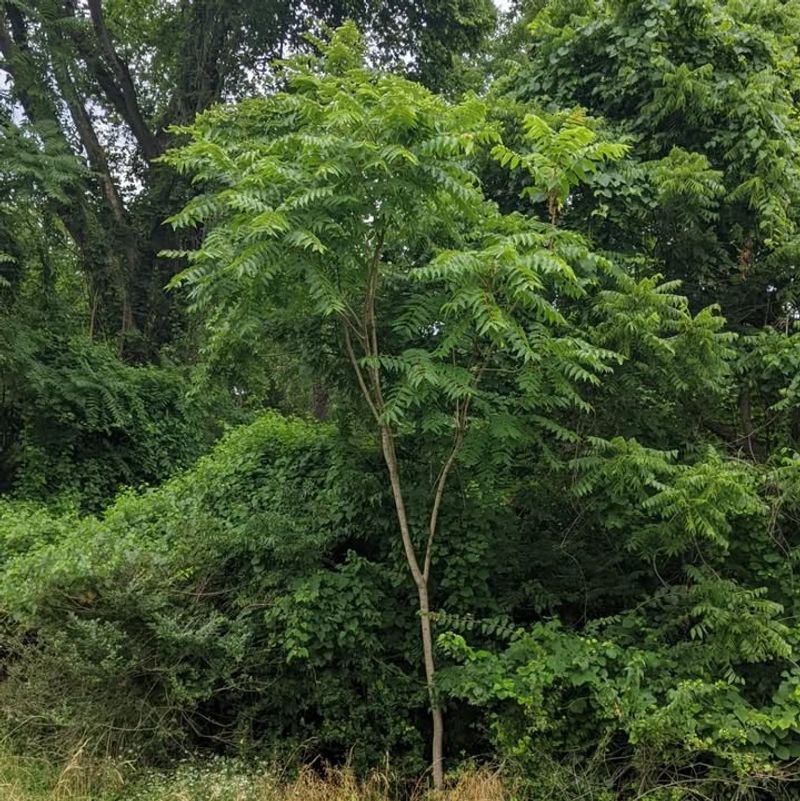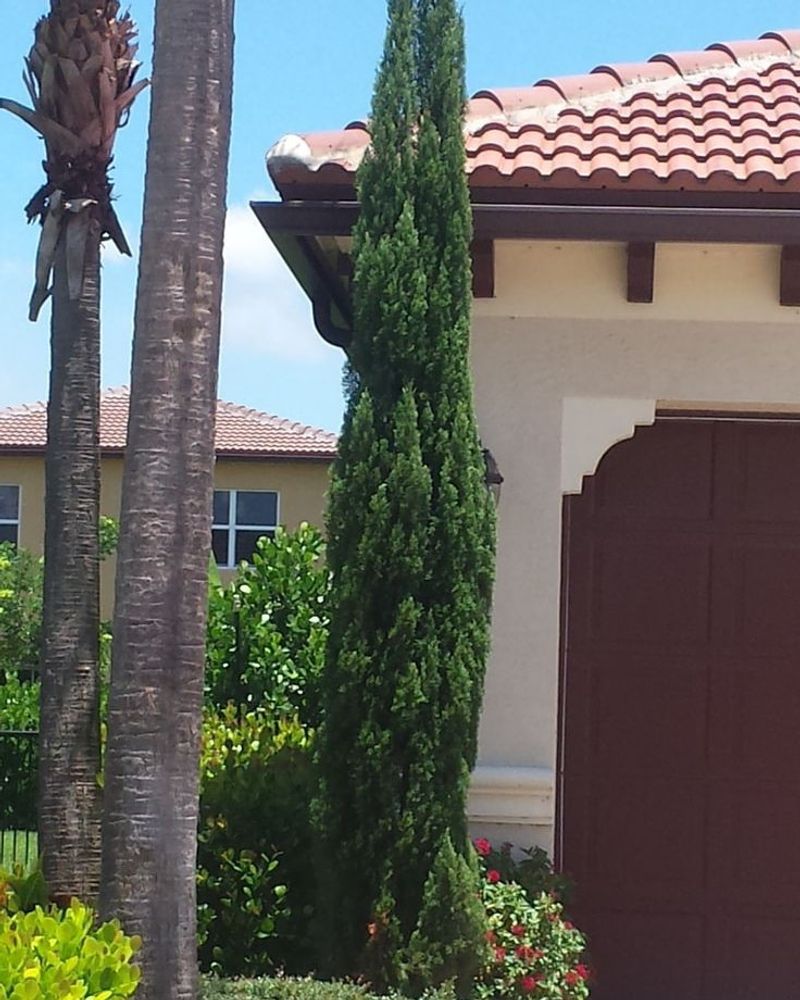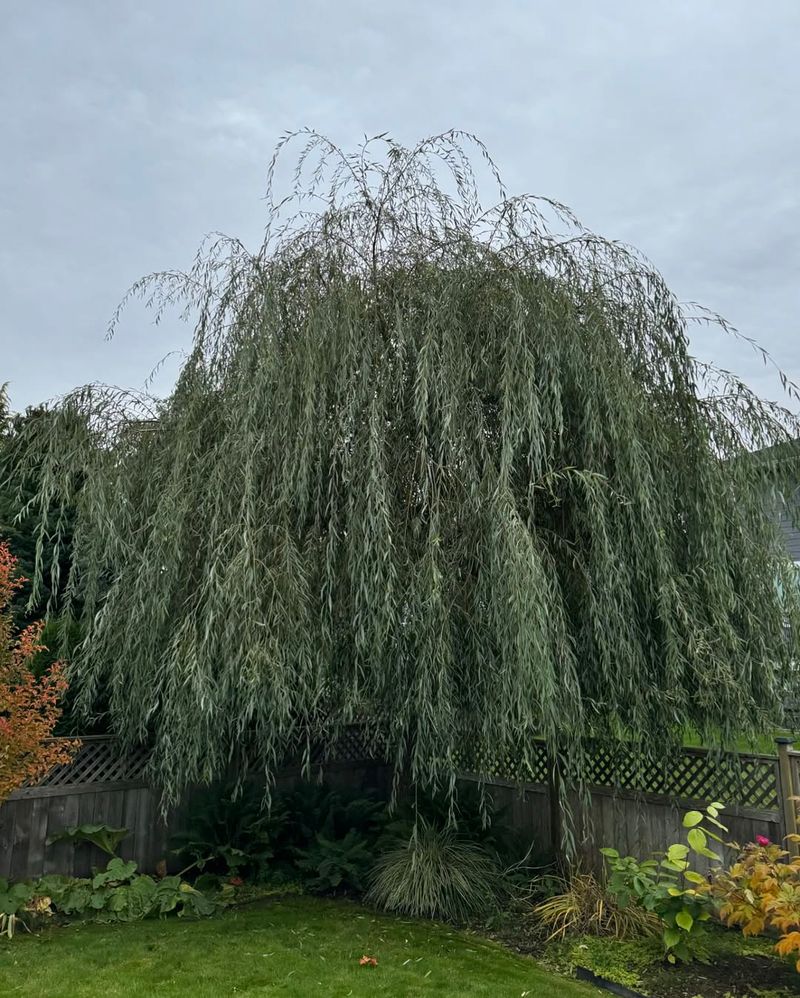California homeowners face unique challenges when it comes to managing trees on their property. Some species can become serious liabilities if left unchecked, threatening homes, power lines, and even neighboring properties.
Understanding which trees pose risks and when removal becomes necessary can save you from costly fines, legal disputes, and dangerous situations down the road.
1. Eucalyptus Trees Near Structures
Eucalyptus trees might smell wonderful, but their shallow root systems make them incredibly unstable during California’s infamous windstorms. These Australian imports can topple without warning, crushing homes, cars, and anything else in their path.
Property owners across California have faced lawsuits after their eucalyptus trees damaged neighboring properties. Insurance companies often refuse coverage if you knew about the risk but ignored it.
Local ordinances in many counties require removal when these trees pose clear dangers to structures or public spaces.
2. Dead Or Dying Pine Trees
Bark beetles have devastated pine populations throughout California, leaving behind millions of dead trees that act as kindling during wildfire season. Keeping a dead pine on your property isn’t just dangerous—it’s often illegal in high-risk fire zones.
Many California municipalities have strict deadlines for removing deceased pines, with daily fines accumulating for non-compliance. The dried needles and brittle branches ignite easily, putting entire neighborhoods at risk.
Fire marshals can issue mandatory removal orders, and ignoring them could result in criminal charges if a fire starts.
3. Overgrown Acacia Trees
Acacias grow fast and furiously in California’s climate, which sounds great until their branches start interfering with power lines and utility infrastructure. Once they reach electrical wires, they become your responsibility to trim or remove, not the utility company’s problem.
Power companies in California regularly send violation notices to homeowners whose trees threaten grid stability. If your acacia causes a power outage or sparks a fire, you could face massive liability claims.
Some cities impose immediate removal requirements once acacias breach designated clearance zones around utilities.
4. Palm Trees With Hanging Fronds
Those iconic California palms require more maintenance than most people realize, especially when dead fronds accumulate and hang precariously overhead. These heavy fronds can crash down on pedestrians, vehicles, or rooftops without warning, creating serious injury risks.
California fire codes in many jurisdictions mandate regular frond removal to reduce wildfire fuel loads. Neglected palms with skirts of dead fronds violate fire safety ordinances in numerous cities.
Code enforcement officers can issue citations requiring immediate professional trimming or complete removal if the hazard is severe enough.
5. Invasive Tree Of Heaven
Tree of Heaven earned its name from how quickly it shoots skyward, but California officials consider it a noxious weed that must be eradicated. This aggressive invader damages foundations, sewer lines, and sidewalks with its powerful root system while crowding out native species.
Several California counties have mandatory removal ordinances for Tree of Heaven due to its role in spreading disease to agricultural crops. Property owners who allow it to spread can face substantial fines and forced removal at their expense.
The tree also harbors spotted lanternfly, making its presence an agricultural emergency.
6. Italian Cypress Near Driveways
Slender and elegant, Italian Cypress trees are a favorite in California landscaping. However, when planted near driveways, their dense root systems can become disruptive.
Roots may damage pavement, leading to costly repairs. Furthermore, these trees can obstruct drivers’ visibility, creating safety hazards.
Keeping them trimmed and strategically planted can prevent such issues. Did you know? Italian Cypress trees were originally brought to California for their ornamental appeal but have since become a common sight in suburban settings. Proper placement away from structures can ensure they remain a beautiful feature rather than a liability.
7. Willow Trees By Water Sources
Graceful and picturesque, willow trees are often found near water sources in California. Their beauty, however, comes with a price.
The aggressive root system can damage nearby plumbing and structures. If left unchecked, they may also dominate water resources, affecting local ecology.
Regular maintenance is essential to mitigate these risks. Surprisingly, willow trees can be a natural indicator of water presence due to their high water demands. By managing their growth and location, willow trees can continue to charm without causing trouble.

